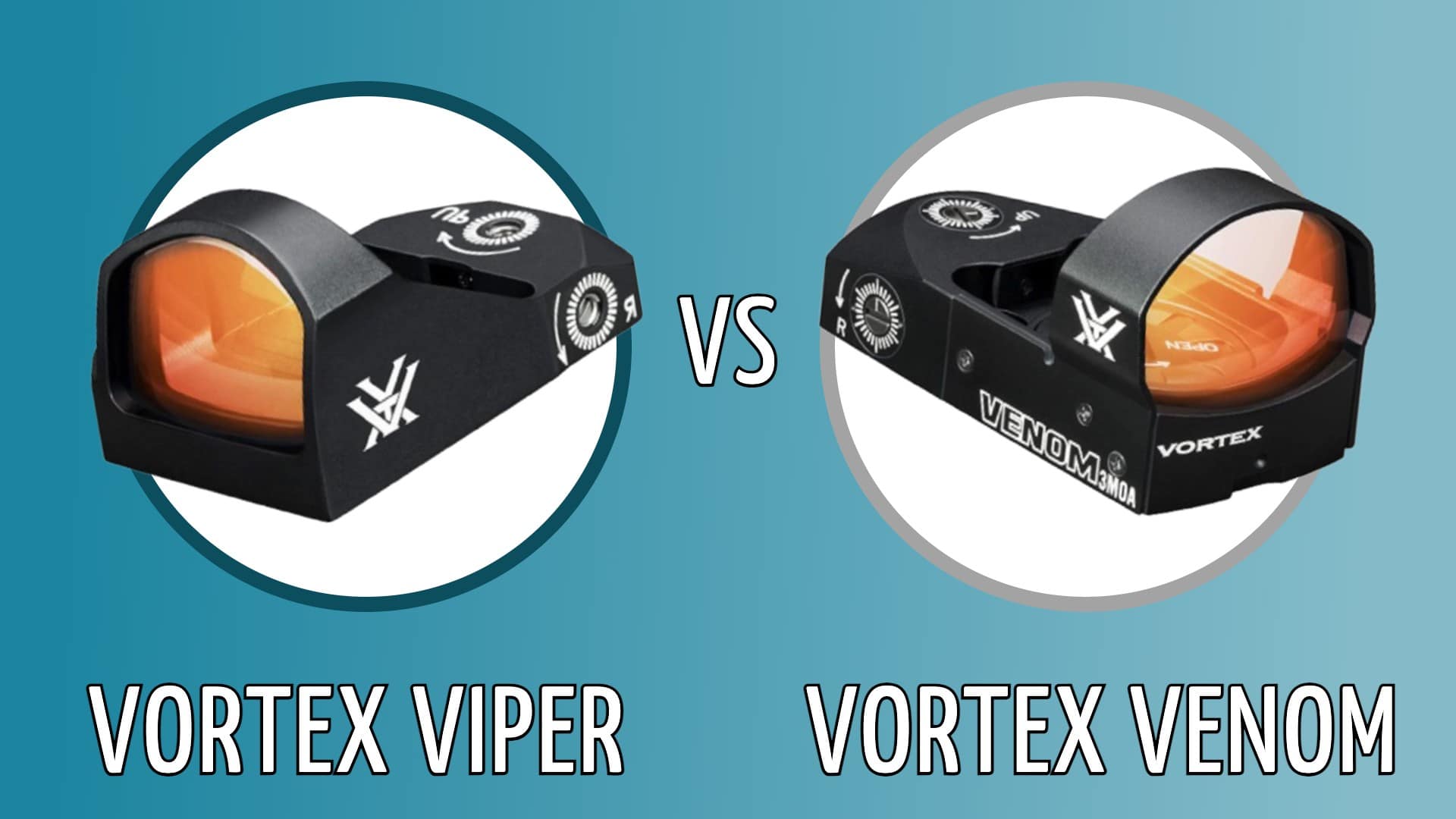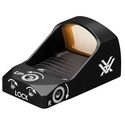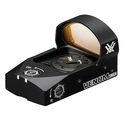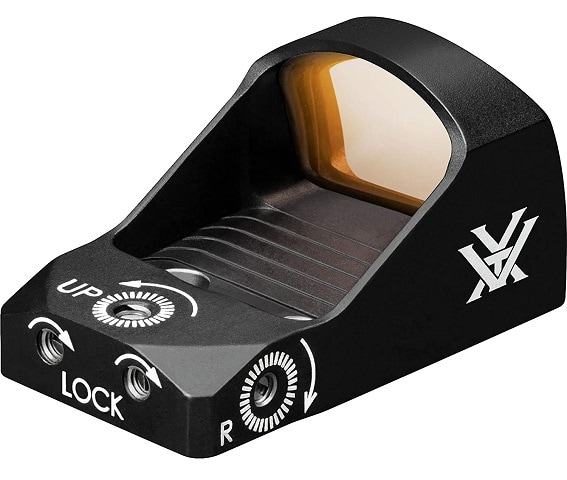Vortex Viper vs. Venom Red Dot Sights: Which Is Better?
Last Updated on

Vortex is known for their quality optics across the spectrum of price points, and they have two flagship entries into the red dot space: the Viper and the Venom. There are countless red dot options out there, but for this comparison, we want to stick with just the Viper vs Venom. These two red dots have a lot of similarities, but also some key differences that could make the difference in which one you should buy.
Red dot sights are optics that mount on a firearm and do not provide magnification but vastly improve the speed of target acquisition and accuracy over the iron sights that come stock with most guns. There is the tube style, which is more similar in appearance to a small scope, and then there’s the reflex style which both of these Vortex scopes are designed with. There are also holographic sights, but we won’t really get into those.
Let’s take a closer look at what separates these two and which would make you the best addition to your collection.
At a Glance
| Image | Product | Details | |
|---|---|---|---|
 |
Vortex Viper |
|
CHECK PRICE |
 |
Vortex Venom |
|
CHECK PRICE |

Overview of Vortex Viper:
The Vortex Viper is a small red dot sight with a 6 MOA center dot and nothing else on the reticle. Like all red dots, the design allows it to be virtually parallax-free (there is some parallax, but it is minimal), and it has a max windage and elevation adjustment of 120 MOA, which is quite a bit. The adjustment gradations are a full MOA, which is an interesting choice that makes a lot of sense given the short ranges that this sight is intended for.

Dimensions and Features
The Viper is tiny even for a red dot; it is 1.02 inches tall at its highest point, 1.81 inches long, and 1.06 inches wide. It mounts directly onto either a Weaver or Picatinny rail and only weighs 1.03 ounces. Eye relief is unlimited (like all red dots), and the dot is a bright red. There is no green dot version, but you get multiple brightness settings that can drastically affect the battery life.
On the lowest setting it gets up to 30,000 hours of battery life on a single CR2032, and on the highest, it only gets 150 hours, so the difference is quite substantial.
What It’s For
Vortex designed the Viper for handguns. The 6 MOA dot and the slightly smaller dimensions speak to its purpose here. 6 MOA is on the larger end for a center dot, and at 50 yards out, the dot itself will obstruct 3 inches of your target. Handgun targets at 50 yards out will usually be large enough that that won’t be a problem.
A rifle target at 50 yards may only be 4 inches wide to begin with, which makes a 6 MOA dot a little too big to make a lot of sense on a rifle.
The 6 MOA dots come with the benefit of being so easy to see that target acquisition is noticeably faster than with a 3 MOA dot, which is also common. Since handguns are often used in defensive situations, law enforcement applications, and other CQB (close quarters battle) scenarios, the priority is less on pinpoint accuracy and more on being able to quickly put rounds into the center mass of the target.
- Fast target acquisition
- Incredibly light
- Multiple brightness settings
- Great for handguns
- Blocks target at longer distances
- Not as good for rifles

Overview of Vortex Venom:
The Vortex Venom is a close sibling of the Viper and is similar in many respects, but the small differences between them make the Venom a better choice for a rifle or mid to long-range shooting. It’s also small, though not quite as small and light as the Viper. It has a 3 MOA dot which is not as quick and easy to see but also doesn’t obscure nearly as much of the target, especially at 50 yards and beyond.

Dimensions and Features
The Venom is 1.02 inches tall, 1.9 inches long, and 1.11 inches wide. It also weighs 1.1 ounces, which makes it slightly bigger and slightly heavier than the Viper, but the difference here is minute and probably not even noticeable given the weight of the firearm it’s being mounted on. It is parallax-free and has adjustment gradations of 1 MOA, which still makes sense, given the distances a shooter will be using it for.
The multi-coating on the glass is anti-reflective and gives it fantastic light transmission. The Viper also has this multi-coating.
What It’s For
With no magnification, red dots simply are not intended for shooting out past 100 yards, and while the occasional marksman or trick shooter will nail shots at 600 yards with no magnification, most of us will be stretched simply to hit a target at 100 yards with only a red dot. The 3 MOA dot is well-designed for taking shots between 50 and 100 yards, or even 25 to 100 yards.
While a handgun can theoretically be shot out to 100 yards and beyond, in practice even 50 yards is difficult, which makes the Venom a better fit for rifles. The elevation and windage adjustment is tweaked to reflect this, with 130 MOA of adjustment for elevation and only 100 for windage.
- Smaller dot doesn’t block the target
- Great for rifles, shots out to 100 yards
- Lightweight, compact
- Multiple brightness settings
- Dot is harder to see
- Target acquisition is not as fast

Things To Consider
Weapon Choice vs. Shooting Distance
https://www.instagram.com/p/CQQQEK5LC0q/
For the most part, the Venom will be a better fit for rifles and the Viper will be better for handguns, but the reason this is the case is that the two types of firearms are generally used for different distances. If you are a competitive handgun shooter and are shooting out to 50 yards and further, the Venom may be a better choice.
Conversely, if you’re using your rifle exclusively for home defense or something that will almost always happen within 25 yards, then the Viper could be a better fit.
Preference also plays a role here, but the most important thing is the tradeoff between pinpoint accuracy and lightning-fast target acquisition. If both are important to you, then your best option is to pick the one that matches the distance you’ll be shooting and then practice, practice, practice. Your target acquisition and accuracy will both increase the more you practice, and either one can be used effectively to do so.
Benefits of Both
Both the Viper and the Venom come with Weaver/Picatinny compatibility out of the box, which makes them fairly easy to mount onto your firearm and virtually universally compatible. Depending on the gun you’re using, you may need to mount a rail onto it first, but nearly every gun currently in production can have a rail mounted onto it, which means you can get the Viper or Venom on there just fine.
The reflex style of these two sights gives a wider field of view and doesn’t obstruct the target area as much as the tube-style red dot sights. The colored glass does take some getting used to, but it has advantages over clear glass.
The technology behind reflex sights is what makes parallax fairly minimal on them, despite them being much physically closer to your eye than your target will be. Parallax can’t be eliminated completely, but there are many other factors that will have a more drastic impact on your shot placement than the small amount of parallax still present in these sights.
Which Is Right For You?
https://www.instagram.com/p/CP6I62OLeIM/
The price of these two sights is usually the same, though you may be able to pick one up during a sale and get a good deal on it if your timing is right. The physical dimensions are virtually identical, although the Venom is slightly larger and heavier, and even the adjustment gradations are both 1 MOA, though the Venom has different maximum adjustment amounts.
The core difference between the two is the size of the center dot, and that will most likely be the determining factor as you decide which one is right for you. If you are shooting 25 yards and under, then the 6 MOA is almost indisputably superior to the 3 MOA. If you are shooting 50 yards and over, then the 3 MOA is almost indisputably superior to the 6 MOA. If you’re shooting between 25 and 50 yards, it’s more of a toss-up.

Conclusion
Which is better? Both the Viper and the Venom are high-end, premium red dot sights that will do a fantastic job at their intended tasks. The Viper has a 6 MOA dot and is all-around more designed for handgun shooting at less than 25 yards, and up to 50 yards in a pinch. The Venom has a 3 MOA dot and is designed for rifle shooting from 25 to 100 yards, though the dot will be smaller than necessary at distances less than 50 yards.
- You might also be interested in: Green Dot vs. Red Dot Sight: What’s the Difference?
About the Author Robert Sparks
Robert’s obsession with all things optical started early in life, when his optician father would bring home prototypes for Robert to play with. Nowadays, Robert is dedicated to helping others find the right optics for their needs. His hobbies include astronomy, astrophysics, and model building. Originally from Newark, NJ, he resides in Santa Fe, New Mexico, where the nighttime skies are filled with glittering stars.
Related Articles:
Binocular Magnification Chart: Numbers & Distances Compared
Holy Stone Drone Review of 2024 – Pros, Cons, and Verdict
Ultraviolet Light vs Black Light: What’s the Difference?
Light Waves vs. Sound Waves: The Key Differences
Infrared vs. Thermal Cameras: How Are They Different?
Far Infrared vs Near Infrared: What’s The Difference?
Mottled Duck vs. Mallard vs. Black Duck: What’s the Difference?
Shutter Speed vs Frame Rate: Pros, Cons, & Difference
